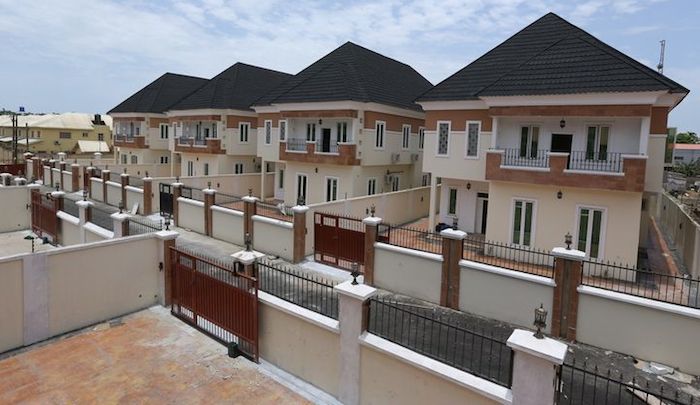Iconic Architectural Wonders in Nigeria
By Blessing Clement
Nigeria, with its impressive population of 206 million people, stands as Africa's largest economy. In fact, Nigeria's sheer population makes it the continent's largest market, surpassing Ethiopia and Egypt, with 110 million and 102 million inhabitants, respectively.
But Nigeria's allure goes beyond just its numbers. The country, rich in oil resources, boasts approximately 37 trillion barrels of oil, ranking as the 10th largest oil reserve in the world, contributing to 2.2% of global reserves. The oil sector has played a significant role in driving economic growth, which, in turn, has fueled the development of the real estate sector.
This growth in population and economy has necessitated substantial infrastructure development to accommodate improved housing, office spaces, shopping malls, schools, churches, and other essential buildings. Architects recognized the investment potential in Nigeria and embarked on creating contemporary, sustainable architectural designs.
However, Nigeria's progress has faced challenges, primarily due to insecurity, including attacks by groups like Boko Haram. These threats have slowed down investments and caused significant damage to homes and public infrastructure. Nevertheless, many cities in Nigeria continue to thrive and grow.
Today, Nigeria showcases modern architectural marvels that seamlessly blend with the nation's heritage by utilizing locally available
building materials. These unique and iconic buildings have not only reshaped the Nigerian skyline but also become prominent landmarks.
1. Kingsway Tower - Lagos
Situated in the prestigious district of Ikoyi, the Kingsway Tower is a striking 15-story building constructed with glass and aluminum. Twelve floors host corporate offices, offering a breathtaking 360-degree view of Lagos. High-end retail stores occupy two floors, while the four-story basement parking can accommodate up to 343 vehicles.
Kingsway Tower Building, Lagos
The building's design is as functional as it is stunning. Architects considered Nigeria's tropical climate and used a north-south orientation to minimize sun glare. Vertical plants and shading screens further reduce heat load. The curved podium slab at the entrance adds a touch of grandeur and shade, making the lobby comfortable for visitors, especially on hot days. The use of innovative materials, such as curtain walls with a gentle curve and low emission double glazed windows, enhances the overall design. The high ceilings, natural wood panels, and Italian flooring make Kingsway Tower one of Nigeria's architectural gems.
2. Federal Ministry of Defence, Abuja (Ship House)
The Federal Ministry of Defence, known as Ship House, is an imposing structure that showcases Nigeria's military strength. Originally built for the Nigeria Ports Authority, it later became the Ministry of Defence, housing various defense agencies and departments, including the Nigerian Army, Air Force, and Navy.
Federal Ministry of Defence Building, Abuja
The building's massive scale has sparked debates, with some viewing it as a unique, beautiful, and functional design, while others see it as a modern monstrosity. Regardless of the divided opinions, Ship House stands as one of Nigeria's most unforgettable buildings and a must-see attraction in Abuja.
3. National Theatre Lagos
Located in Iganmu, Lagos, the National Theatre, built in 1976, boasts remarkable architectural work that stands out amidst modern structures. Designed and constructed by Techno Exporstroy, a Bulgarian construction company, this building serves as a hub for Nigeria's art and culture.
National Theatre Building, Lagos
Covering a floor area of 23,000 square meters and standing at a height of 31 meters, the building's unique design, resembling a military hat, reflects the era of its construction. It can comfortably accommodate 5000 people and includes a collapsible stage, cinema halls, intricate wall carvings, and sculptures that celebrate Nigeria's diverse cultures. The surrounding greenery and lakes add to its aesthetic appeal.
4. Cathedral Church of Christ, Lagos
Dating back to the 1940s, the Cathedral Church of Christ remains a timeless architectural masterpiece. Initiated by architect Bagan Benjamin in 1924 and completed in 1946, it is the oldest Anglican cathedral in Nigeria. Serving as the seat of the archbishop of the Province of West Africa, the archbishop of the Ecclesiastical Province of Lagos, and the Bishop of Lagos, it holds a central position on Lagos Island.
Cathedral Church of Christ Building, Lagos
With two facades, one facing the altar and the other the right nave, this cathedral's Norman Gothic architecture still captivates today. It also houses Nigeria's largest organ, making it an architectural and musical marvel.
5. Akwa Ibom Digital Library
Constructed in 2012, the Akwa Ibom Digital Library stands as the largest of its kind in West Africa. Designed with an eye on the digital age, it offers functionality while standing as a unique architectural landmark.

Akwa Ibom Digital Library
The use of glass instead of concrete ensures abundant natural lighting. Dark glass acts as a sunscreen to prevent glare. The library is spacious and offers facilities like a video conferencing hall, an e-learning ICT training facility, office spaces, a boardroom, a smart classroom, a creche, and a reprography unit. Its forward-thinking design has made it one of Nigeria's outstanding structures, catering to present and future demands.























